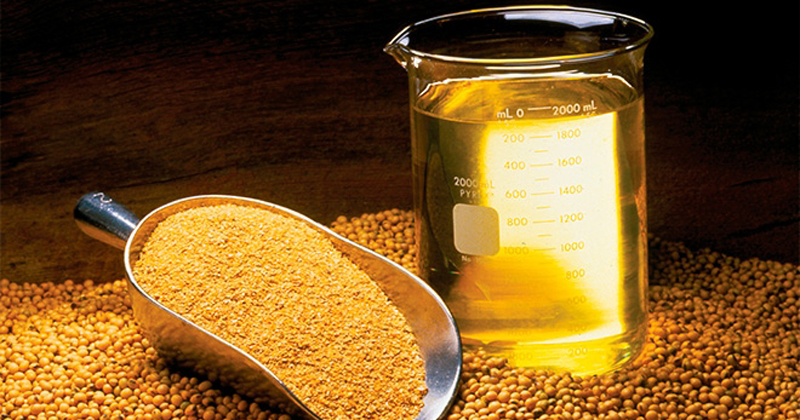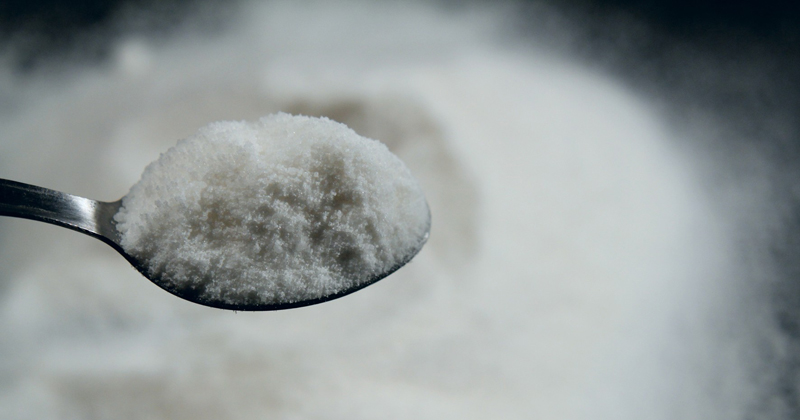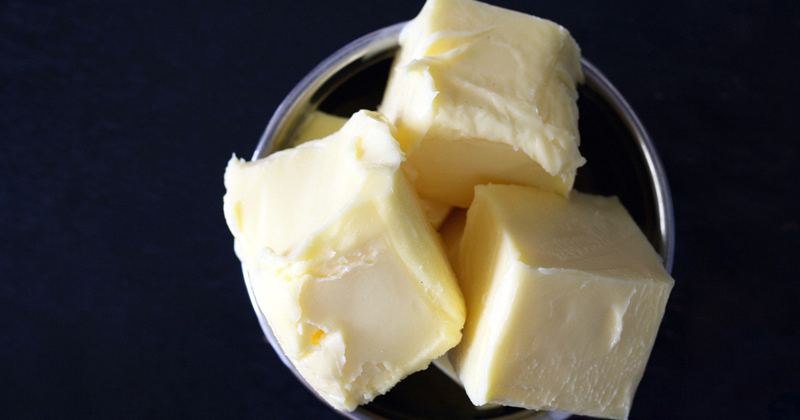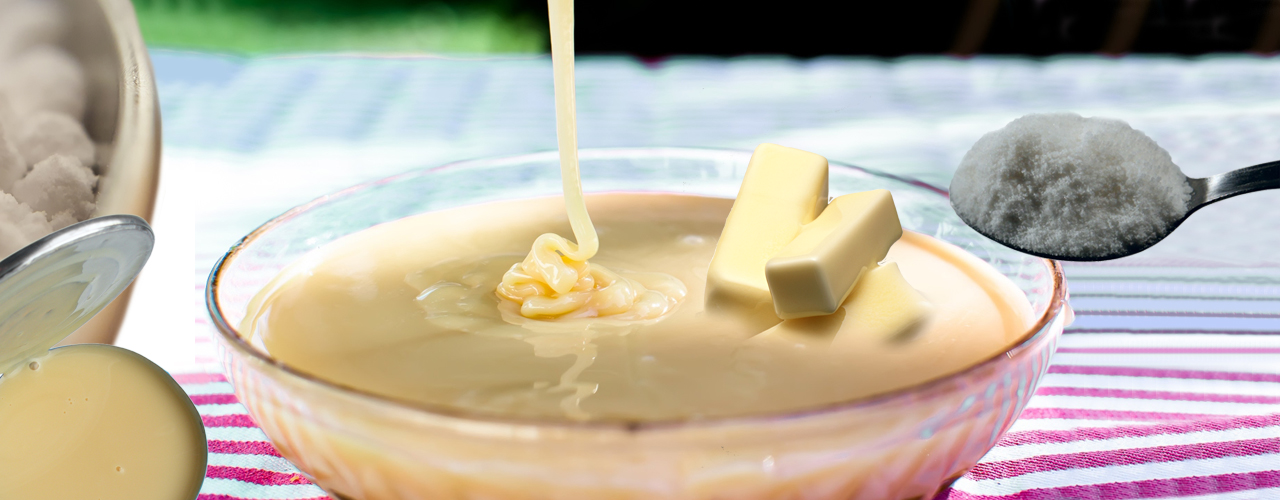Sobre a importância dos quintais, cada vez mais desaparecidos e, com isso, as nossas raízes também.
sábado, 25 de novembro de 2017
Engineering the gut microbiome with 'good' bacteria may help treat Crohn's disease
A single bacterial enzyme can reconfigure microbiome
Date: November 15, 2017
Source: University of Pennsylvania School of Medicine
Summary:
Researchers have singled out a bacterial enzyme behind an imbalance in the gut microbiome linked to Crohn's disease. The new study suggests that wiping out a significant portion of the bacteria in the gut microbiome, and then re-introducing a certain type of 'good' bacteria that lacks this enzyme, known as urease, may be an effective approach to better treat these diseases.
See more at:
Cinnamon turns up the heat on fat cells
Date: November 21, 2017
Source: University of Michigan
Summary:
New research has determined how a common holiday spice -- cinnamon -- might be enlisted in the fight against obesity.
New research from the University of Michigan Life Sciences Institute has determined how a common holiday spice -- cinnamon -- might be enlisted in the fight against obesity.
Scientists had previously observed that cinnamaldehyde, an essential oil that gives cinnamon its flavor, appeared to protect mice against obesity and hyperglycemia. But the mechanisms underlying the effect were not well understood.
Researchers in the lab of Jun Wu, research assistant professor at the LSI, wanted to better understand cinnamaldehyde's action and determine whether it might be protective in humans, too.
"Scientists were finding that this compound affected metabolism," said Wu, who also is an assistant professor of molecular and integrative physiology at the U-M Medical School. "So we wanted to figure out how -- what pathway might be involved, what it looked like in mice and what it looked like in human cells."
Their findings, which appear in the December issue of the journal Metabolism, indicated that cinnamaldehyde improves metabolic health by acting directly on fat cells, or adipocytes, inducing them to start burning energy through a process called thermogenesis.
Wu and her colleagues tested human adipocytes from volunteers representing a range of ages, ethnicities and body mass indices. When the cells were treated with cinnamaldehyde, the researchers noticed increased expression of several genes and enzymes that enhance lipid metabolism. They also observed an increase in Ucp1 and Fgf21, which are important metabolic regulatory proteins involved in thermogenesis.
Adipocytes normally store energy in the form of lipids. This long-term storage was beneficial to our distant ancestors, who had much less access to high-fat foods and thus a much greater need to store fat. That fat could then be used by the body in times of scarcity or in cold temperatures, which induce adipocytes to convert stored energy into heat.
"It's only been relatively recently that energy surplus has become a problem," Wu said. "Throughout evolution, the opposite -- energy deficiency -- has been the problem. So any energy-consuming process usually turns off the moment the body doesn't need it."
With the rising obesity epidemic, researchers like Wu have been looking for ways to prompt fat cells to activate thermogenesis, turning those fat-burning processes back on.
Wu believes that cinnamaldehyde may offer one such activation method. And because it is already used widely in the food industry, it might be easier to convince patients to stick to a cinnamon-based treatment than to a traditional drug regimen.
"Cinnamon has been part of our diets for thousands of years, and people generally enjoy it," Wu said. "So if it can help protect against obesity, too, it may offer an approach to metabolic health that is easier for patients to adhere to."
Now, before anyone goes dumping tons of extra cinnamon in their egg nog in hopes of keeping holiday-season pounds at bay, Wu cautioned that further study is needed to determine how best to harness cinnamaldehyde's metabolic benefits without causing adverse side effects.
Story Source:
Materials provided by University of Michigan. Note: Content may be edited for style and length.
Journal Reference:
Juan Jiang, Margo P. Emont, Heejin Jun, Xiaona Qiao, Jiling Liao, Dong-il Kim, Jun Wu. Cinnamaldehyde induces fat cell-autonomous thermogenesis and metabolic reprogramming. Metabolism, 2017; 77: 58 DOI: 10.1016/j.metabol.2017.08.006
Cite This Page:
University of Michigan. "Cinnamon turns up the heat on fat cells." ScienceDaily. ScienceDaily, 21 November 2017. <www.sciencedaily.com/releases/2017/11/171121095145.htm>.
sexta-feira, 24 de novembro de 2017
After cooking, biofortified corn and eggs retain nutrient needed to prevent blindness
Date: November 15, 2017
Source: American Chemical Society
Summary:
Fortified and biofortified foods are at the forefront of efforts to combat vitamin A deficiency worldwide. But little is known about what influence processing may have on the retention of vitamin A precursors in these foods. Now scientists report that a high percentage of these healthful substances -- in some cases, almost all -- can survive cooking, depending on the preparation method.
See more at:
Anabolizantes comprometem funcionalidade do “colesterol bom”
Estudo do InCor mostra mais uma forma de como os esteroides estão relacionados a problemas no sistema cardiovascular


Por Larissa Lopes - Editorias: Ciências da Saúde
Com a popularidade do estilo de vida fitness das academias, o uso de anabolizantes tem se tornado cada vez mais comum, apesar dos conhecidos malefícios para a saúde. Uma pesquisa do Instituto do Coração (Incor) do Hospital das Clínicas da Faculdade de Medicina da USP (FMUSP) verificou mais um deles: o efeito desses esteroides na funcionalidade do HDL, a lipoproteína de alta densidade, mais conhecida como “colesterol bom”.
Ao final dos exames, foi revelado que um a cada quatro usuários de anabolizantes sofria de aterosclerose precoce, doença que não foi diagnosticada em nenhum dos outros grupos. A aterosclerose é uma doença caracterizada pelo acúmulo de placas de gordura em artérias coronárias. Segundo os pesquisadores, os anabolizantes estariam prejudicando a funcionalidade do HDL, que é o responsável por evitar que a LDL, a lipoproteína de baixa densidade ou “colesterol ruim”, se acumule nas artérias.
O estudo acompanhou três grupos distintos que passaram por exames de sangue e tomografias para a avaliação das artérias coronárias. Foram analisados 21 praticantes de musculação que faziam uso de anabolizantes, 20 praticantes não-usuários e dez pessoas sedentárias, que não praticavam musculação nem usavam anabolizantes. A mostra compreendia homens com uma média de idade de 29 anos.

Em longo prazo, o uso desenfreado de anabolizantes pode causar insuficiência cardíaca – Foto: Jeevanreddy007 Wikimedia Commons / CC BY-SA 3.0
Receptores com defeito
“É como se o HDL não conseguisse identificar e separar as partículas ruins de colesterol para retirá-las do sangue”, explica Maria Janieire Alves, cardiologista do InCor e líder do grupo de pesquisa sobre o impacto da autoadministração de esteroides androgênicos anabolizantes no sistema cardiovascular.
“Isto significa que os receptores do HDL em pessoas que usam anabolizantes estão apresentando defeitos. Além de estarem presentes em pouca quantidade, eles também não conseguem captar corretamente essas lipoproteínas presentes no sangue para jogá-las fora”, diz a cardiologista.
Além de filtrar as gorduras do sangue, o HDL também evita que o LDL se oxide nas artérias. Ele age como uma partícula protetora, pois, em caso de oxidação, o LDL tem um potencial ainda maior de inflamação.
“Outros estudos já mostraram o desenvolvimento precoce de aterosclerose neste grupo. O ponto chave do nosso trabalho, agora, é descobrir um dos fatores que podem estar associados a isso”, afirma Francis Ribeiro de Souza, doutorando do InCor e principal autor do artigo que traz novas informações sobre o impacto de anabolizantes no sistema cardiovascular. “Por isso estamos estudando o HDL, que tem uma importante função protetora no sistema cardiovascular e, como sabemos, é encontrado em baixas quantidades em usuários de anabolizantes.”
Malefícios dos anabolizantes
“Quando se fala sobre esses esteróides, há duas realidades diferentes”, analisa Souza. Uma é a da deficiência hormonal, quando alguém recorre aos anabolizantes porque precisa repor hormônios que estão em falta. Outra é a da busca pela força e pelo desempenho físico por parte de pessoas que não precisam dessa reposição hormonal.
Os anabolizantes são uma categoria de hormônios análogos a testosterona que têm a função de aumentar a síntese de proteínas responsáveis pelo crescimento da musculatura.
Uma vez que uma pessoa começa a autoadministrar anabolizantes sem necessidade, a produção natural dos hormônios começa a ser inibida e cai. Essa alteração, por sua vez, pode causar problemas de saúde.

Com o aumento de consumo por parte das mulheres, o grupo de pesquisa pretende também estudar os efeitos dos anabolizantes nelas – Foto: GutinBdn via Wikimedia Commons / CC BY-SA 4.0
“Pensando em estética, os anabolizantes cumprem com seu papel. As pessoas aumentam o porte muscular, ficam mais fortes, aumentam o desempenho físico. Mas em relação à saúde, eles não trazem nenhum benefício”, expõe Souza. “O uso indiscriminado de anabolizantes causa alterações no perfil lipídico; diminui o HDL, que é o ‘colesterol bom’; e aumenta o LDL. Além disso, já foram observados em outros estudos alterações hepáticas, algumas associações com câncer, morte súbita, hipertrofia cardíaca e arritmia”, lembra o doutorando. “Só há malefícios para a saúde, de maneira geral.”
Além dos casos de aterosclerose precoce, foram encontrados no grupo de usuários de anabolizantes da pesquisa do InCor alguns indícios de que a formação de placa de gordura estava se iniciando. “Se a placa ainda não foi formada, ela provavelmente se formará logo, e isso leva a um fator trombogênico (geração de coágulos) muito elevado nesta população”, alerta Maria Janieire.
Durante os exames, também foi diagnosticado um caso de úlcera em artérias coronárias e outro de embolia pulmonar, documentado em uma angiotomografia.
Em longo prazo, as pesquisas apontam que o uso desenfreado de anabolizantes pode causar insuficiência cardíaca. “Nós observamos que há um depósito maior de colágeno ruim no esqueleto fibroso do coração e isso pode levar a uma disfunção cardíaca no futuro”, diz a cardiologista.
Por enquanto, o estudo foi feito apenas com homens, que são os principais consumidores de anabolizantes, mas com o aumento de consumo por parte das mulheres, o grupo de pesquisa ainda pretende estudar os efeitos nelas.
Mais informações: e-mail Maria Janieire Alves janieiren@hotmail.com, Francis Ribeiro de Souza francissribeiro@gmail.com
Link:
http://jornal.usp.br/ciencias/ciencias-da-saude/ciencias-2811-anabolizantes-comprometem-funcionalidade-do-colesterol-bom/
Link:
http://jornal.usp.br/ciencias/ciencias-da-saude/ciencias-2811-anabolizantes-comprometem-funcionalidade-do-colesterol-bom/
Maintaining sufficient vitamin D levels may help to prevent rheumatoid arthritis
Date: November 21, 2017
Source: University of Birmingham
Summary:
Maintaining sufficient vitamin D levels may help to prevent the onset of inflammatory diseases like rheumatoid arthritis, research has discovered.
Maintaining sufficient vitamin D levels may help to prevent the onset of inflammatory diseases like rheumatoid arthritis, research led by the University of Birmingham has discovered.
The research also found that while Vitamin D can be effective at preventing the onset of inflammation, it is less effective once inflammatory disease is established because diseases such as rheumatoid arthritis leads to vitamin D insensitivity.
Another key finding of the research was that the impact of vitamin D on inflammatory disease cannot be predicted using cells from healthy individuals or even from the blood of patients with inflammation as cells from the disease tissue are very different.
The researchers concluded that if vitamin D is to be used in patients with rheumatoid arthritis, clinicians may need to prescribe much higher doses than currently employed or provide a treatment that also corrects the vitamin D insensitivity of immune cells within the joint.
In addition to its well-established actions on the skeleton, vitamin D is a potent modulator of the immune system. In particular, vitamin D can suppress inflammation in autoimmune diseases such as rheumatoid arthritis. Patients with rheumatoid arthritis are frequently vitamin D deficient and may receive vitamin D supplementation.
The study, published in the Journal of Autoimmunity, involved using paired peripheral blood and synovial fluid from the inflamed joint of patients with rheumatoid arthritis.
Professor Martin Hewison, of the University of Birmingham's Institute of Metabolism and Systems Research, said: "Our current understanding of vitamin D and rheumatoid arthritis is based on studies of patient blood which may not truly represent the situation at the site of inflammation -- the joints.
"We therefore investigated responses to the active form of vitamin D in immune cells from the inflamed joints of patients with rheumatoid arthritis.
"Compared to blood from the same patients, the inflamed joint immune cells were much less sensitive to active vitamin D.
"This appears to be because immune cells from the joints of rheumatoid arthritis patients are more committed to inflammation, and therefore less likely to change, even though they have all the machinery to respond to vitamin D."
Dr Louisa Jeffery, also of the University of Birmingham, said: "Our research indicates that maintaining sufficient vitamin D may help to prevent the onset of inflammatory diseases like rheumatoid arthritis.
"However, for patients who already have rheumatoid arthritis, simply providing vitamin D might not be enough. Instead much higher doses of vitamin D may be needed, or possibly a new treatment that bypasses or corrects the vitamin D insensitivity of immune cells within the joint."
Senior author Professor Karim Raza, also of the University of Birmingham, said: "Our findings were unexpected as we initially thought that cells from the inflamed rheumatoid joint would respond just as well to vitamin D as cells from the blood. The fact that they don't has important implications for how we think about using vitamin D to treat inflammation.
"Unlike previous studies we isolated different immune cell types from the actual site of disease to determine whether specific subsets of immune cells (specific T cell groups) have equal sensitivity to vitamin D."
This is the first research of its kind to characterise the effects of vitamin D in both peripheral blood and inflamed joints of patients with inflammatory disease.
The study, carried out in collaboration with Professor David Sansom at University College London, is part of an ongoing research project which first began in 2011.
The university now hopes to embark on new research to determine why rheumatoid arthritis leads to vitamin D insensitivity, how we can overcome this and whether this effect is seen in other inflammatory diseases.
Story Source:
Materials provided by University of Birmingham. Note: Content may be edited for style and length.
Journal Reference:
Louisa E. Jeffery, Peter Henley, Nefisa Marium, Andrew Filer, David M. Sansom, Martin Hewison, Karim Raza. Decreased sensitivity to 1,25-dihydroxyvitamin D3 in T cells from the rheumatoid joint. Journal of Autoimmunity, 2017; DOI: 10.1016/j.jaut.2017.10.001
Cite This Page:
University of Birmingham. "Maintaining sufficient vitamin D levels may help to prevent rheumatoid arthritis." ScienceDaily. ScienceDaily, 21 November 2017. <www.sciencedaily.com/releases/2017/11/171121123308.htm>.
Three to four cups of coffee a day linked to longer life
Three or 4 cups a day confers greatest benefit, except in pregnancy and for women at risk of fracture
Date: November 22, 2017
Source: BMJ
Summary:
Drinking coffee is 'more likely to benefit health than to harm it' for a range of health outcomes, say researchers.

Evidence from over 200 studies suggests that drinking three to four cups of coffee a day is linked to a lower risk of early death than not drinking any coffee.
Credit: © Romolo Tavani / Fotolia
Drinking coffee is "more likely to benefit health than to harm it" for a range of health outcomes, say researchers in The BMJ today.
They bring together evidence from over 200 studies and find that drinking three to four cups of coffee a day is associated with a lower risk of death and getting heart disease compared with drinking no coffee. Coffee drinking is also associated with lower risk of some cancers, diabetes, liver disease and dementia.
However, they say drinking coffee in pregnancy may be associated with harms, and may be linked to a very small increased risk of fracture in women.
The included studies used mainly observational data, providing lower quality evidence, so no firm conclusions can be drawn about cause and effect, but their findings back up other recent reviews and studies of coffee intake. As such, they say, excluding pregnancy and women at risk of fracture, "coffee drinking appears safe within usual patterns of consumption" and they suggest that coffee could be safely tested in randomised trials.
Coffee is one of the most commonly consumed beverages worldwide and could have positive health benefits. But existing evidence is of lower quality from observational research and randomised controlled trials are needed to strengthen the evidence of benefits.
To better understand the effects of coffee consumption on health, a team led by Dr Robin Poole, Specialist Registrar in Public Health at the University of Southampton, with collaborators from the University of Edinburgh, carried out an umbrella review of 201 studies that had aggregated data from observational research and 17 studies that had aggregated data from clinical trials across all countries and all settings.
Umbrella reviews synthesise previous meta-analyses and provide a high-level summary of research on a particular topic
Drinking coffee was consistently associated with a lower risk of death from all causes and from heart disease, with the largest reduction in relative risk of death at three cups a day, compared with non-coffee drinkers. Increasing consumption to above three cups a day was not associated with harm, but the beneficial effect was less pronounced.
Coffee was also associated with a lower risk of several cancers, including prostate, endometrial, skin and liver cancer, as well as type 2 diabetes, gallstones and gout. The greatest benefit was seen for liver conditions, such as cirrhosis of the liver.
Finally, there seemed to be beneficial associations between coffee consumption and Parkinson's disease, depression and Alzheimer's disease.
There was less evidence for the effects of drinking decaffeinated coffee but it had similar benefits for a number of outcomes.
Many of the included studies may have adjusted for factors that may be associated with both the health outcome and with coffee drinking, such as smoking. This was not comprehensive and varied from study to study. The authors can therefore not rule out the effect of such factors on the apparent harmful or beneficial associations.
The authors conclude that coffee drinking "seems safe within usual patterns of consumption, except during pregnancy and in women at increased risk of fracture." And they call for robust randomised controlled trials "to understand whether the key observed associations are causal."
In a linked editorial, Eliseo Guallar at the Johns Hopkins Bloomberg School of Public Health says, although we can be reassured that coffee intake is generally safe, doctors should not recommend drinking coffee to prevent disease -- and people should not start drinking coffee for health reasons.
As this study shows, some people may be at higher risk of adverse effects, he writes, and there is "substantial uncertainty" about the effects of higher levels of intake. Finally, coffee is often consumed with products rich in refined sugars and unhealthy fats, "and these may independently contribute to adverse health outcomes," he adds.
However, even with these caveats, "moderate coffee consumption seems remarkably safe, and it can be incorporated as part of a healthy diet by most of the adult population," he concludes.
Story Source:
Materials provided by BMJ. Note: Content may be edited for style and length.
Journal Reference:
Robin Poole, Oliver J Kennedy, Paul Roderick, Jonathan A Fallowfield, Peter C Hayes, Julie Parkes. Coffee consumption and health: umbrella review of meta-analyses of multiple health outcomes. BMJ, 2017; j5024 DOI: 10.1136/bmj.j5024
Cite This Page:
BMJ. "Three to four cups of coffee a day linked to longer life: Three or 4 cups a day confers greatest benefit, except in pregnancy and for women at risk of fracture." ScienceDaily. ScienceDaily, 22 November 2017. <www.sciencedaily.com/releases/2017/11/171122190659.htm>.
World's first alcoholic beverage made from tofu whey
Date: November 27, 2017
Source: National University of Singapore
Summary:
Tofu whey, a liquid that is generated from the production of tofu and is often discarded, has been used in a tasty alcoholic beverage that researchers have named Sachi. The innovative fermentation technique also enriches the drink with isoflavones, which are antioxidants that have many health benefits.

Jian Yong (left) and Assoc Prof Liu started working on the beverage a year ago.
Credit: Image courtesy of National University of Singapore
A research team from the National University of Singapore (NUS) has successfully turned tofu whey, a liquid that is generated from the production of tofu and is often discarded, into a tasty alcoholic beverage which they named Sachi. The innovative fermentation technique also enriches the drink with isoflavones, which are antioxidants that have many health benefits.
The creation of Sachi was initiated a year ago by Associate Professor LIU Shao-Quan and his PhD student Mr CHUA Jian-Yong, who have an interest in sustainable food production. Both are from the Food Science and Technology Programme at the NUS Faculty of Science.
"The traditional way of manufacturing tofu produces a large amount of whey, which contains high levels of calcium and unique soya nutrients such as isoflavones and prebiotics. Hence, disposing tofu whey is wasteful. Very little research has been done to transform tofu whey into edible food and beverage products. I had previously worked on alcohol fermentation during my undergraduate studies in NUS, so I decided to take up the challenge of producing an alcoholic beverage using the whey. The drink turned out to be tasty, which is a pleasant surprise," said Mr Chua.
Turning waste into a tasty beverage
Tofu, also known as bean curd, is a popular food made from soybeans. One of the most common methods of producing tofu is by curdling freshly boiled soya milk, cooling it, and pressing it into a solid block. During the pressing process to remove excess water, tofu whey is generated. However, when tofu whey is discarded as an untreated waste, it creates environmental pollution as the protein and soluble sugars in the whey could contribute to oxygen depletion in the waterways. In contrast, upcycling tofu whey can be a means of generating economic returns for businesses.
"The health benefits associated with soy products, coupled with changing preferences towards vegetarian diets, have fueled the growth of tofu production. As a result, the amount of tofu whey has also increased proportionally. Alcoholic fermentation can serve as an alternative method to convert tofu whey into food products that can be consumed directly. Our unique fermentation technique also serves as a zero-waste solution to the serious issue of tofu whey disposal," explained Assoc Prof Liu.
Under the guidance of Assoc Prof Liu, Mr Chua took about three months to come up with a unique recipe to make an alcoholic beverage from tofu whey. He first made fresh soya milk from soybeans, and then used the soya milk to make tofu. In the course of making tofu, he collected the whey. Sugar, acid and yeast were added to the tofu whey, and the concoction was fermented to produce the alcoholic beverage. Mr Chua also designed a novel fermentation technique which utilises the tofu whey fully without generating any waste. The whole process of making the alcoholic beverage takes about three weeks.
Biotransformation of tofu whey yields benefits
Altering the composition of tofu whey via biotransformation methods converts its strong beany odour into a fruity, sweet flavour, and extends the shelf life of tofu whey from less than one day to about four months. In addition, after fermentation, the bound isoflavones that were present in the tofu whey were transformed into free isoflavones that can be absorbed more easily by the human body. The result is a refreshing beverage that is a tad sweet, with fruity and floral notes, and has an alcohol content of about 7 to 8 per cent.
The team has filed a patent for the novel process of making Sachi, and they are looking to collaborate with industry partners to introduce the drink to consumers.
Story Source:
Materials provided by National University of Singapore. Note: Content may be edited for style and length.
Cite This Page:
National University of Singapore. "World's first alcoholic beverage made from tofu whey." ScienceDaily. ScienceDaily, 27 November 2017. <www.sciencedaily.com/releases/2017/11/171127093201.htm>.
quinta-feira, 23 de novembro de 2017
When vegetables are closer in price to chips, people eat healthier
Date:November 16, 2017
Source: Drexel University
Summary:
A new study determined that the difference in price of healthy foods compared to unhealthy foods plays a significant role in whether people have a healthy diet.
See more at:
Estudo brasileiro poderá tornar óleo de soja mais saudável
Pesquisadores buscam aumentar concentração de ácido oleico no óleo de soja

Por Redação - Editorias: Ciências Agrárias

Pesquisadores buscam marcadores genéticos que possibilitem, por meio da seleção genômica, aumentar o teor de ácido oleico no óleo de soja, o que também seria útil para a produção de biodiesel – Foto: United Soybean Board/ Wikimedia Communs
Um dos fatores que conferiram ao azeite de oliva a fama de “gordura do bem” foi sua alta concentração de ácido oleico (até 84% do total de ácidos graxos do produto). Também conhecido como ômega 9, trata-se de um ácido graxo monoinsaturado ao qual têm sido atribuídas propriedades anti-inflamatórias e a capacidade de reduzir o colesterol ruim (LDL).
No óleo de soja, esse nutriente também está presente, mas em quantidades mais modestas – em média 23% do total de ácidos graxos do produto. Mas esse número poderá se tornar significativamente maior no futuro, se depender dos esforços de pesquisadores da Universidade Santa Cecília (Unisanta), em Santos, e da Escola Superior de Agricultura Luiz de Queiroz (Esalq) da USP.
“Aumentar o teor de ácido oleico no óleo de soja seria interessante não apenas para o consumo humano como também para a produção de biodiesel. Por esse motivo, nosso projeto busca marcadores genéticos que possibilitem, por meio da seleção genômica, modificar o perfil de ácidos graxos do óleo de soja”, disse Regina Priolli, professora da Unisanta.
A investigação conta com apoio da Fundação de Amparo à Pesquisa do Estado de São Paulo (Fapesp) e é conduzida no âmbito do Programa Fapesp de Pesquisa em Bioenergia (Bioen). Resultados recentes foram apresentados em Campos do Jordão durante a terceira edição da Brazilian Bioenergy Science and Technology Conference (BBEST).
Como explicou Priolli, além do ácido oleico, outros quatro ácidos graxos são encontrados no óleo de soja. O ácido palmítico (11% em média) e o ácido esteárico (4%) são gorduras saturadas – consideradas ruins para o sistema cardiovascular. Já o ácido linoleico ou ômega 6 (54%) e o ácido linolênico ou ômega 3 pertencem ao grupo das gorduras poli-insaturadas – também consideradas boas para a saúde – e estão associados às características de sabor do óleo de soja.
“Por meio de melhoramento genético poderíamos, por exemplo, diminuir o teor de ácido palmítico e aumentar o de ácido oleico. Mas é preciso encontrar uma proporção ideal, pois teores desbalanceados destes ácidos graxos fariam com que o óleo endurecesse em temperaturas baixas”, disse.
Mapeamento genômico
Com o objetivo de encontrar as regiões do genoma da soja que controlam a produção dos cinco ácidos graxos encontrados na planta, o grupo coordenado por Priolli conduziu um estudo de associação do genoma (GWAS, na sigla em inglês).
Para isso, o grupo buscou em bancos de germoplasma – plataformas dedicadas à conservação do patrimônio genético das espécies – do Brasil e do exterior material de 96 diferentes acessos (linhagens), com teor total de óleo que variava de 10% a 30%.
“Para esse tipo de análise precisamos ter o material genético mais diverso possível. Por esse motivo, também trouxemos 56 acessos do exterior. Acesso é cada indivíduo de uma espécie registrado no banco de germoplasma. Pode ser uma cultivar selecionada ou uma linhagem não melhorada”, explicou Priolli.
Essas plantas foram cultivadas durante dois anos na Esalq, durante o pós-doutorado de Priolli. Após a colheita, os pesquisadores analisaram o teor de óleo e o perfil de ácidos graxos de cada um dos 96 acessos por um método conhecido como cromatografia gasosa.

Além de alterar o perfil de ácidos graxos, estudo busca aumentar o teor total de óleo encontrado no grão de soja – CC0 Creative Commons
O passo seguinte foi comparar os dados obtidos no campo com dados de marcadores moleculares do tipo polimorfismo de base única (SNPs, na sigla em inglês).
Essa análise revelou 54 SNPs associados à síntese de ácido palmítico, 14 SNPs para ácido oleico, 2 SNPs para ácido linoleico e 2 SNPs associados ao teor total de óleo no grão.
“Após esse mapeamento, comparamos os resultados com dados de bancos genômicos públicos de soja. O objetivo era ver se os marcadores que encontramos estavam perto de algum gene ou já tinham alguma associação descrita com o ácido oleico”, disse Priolli.
De acordo com a pesquisadora, o projeto busca, além de alterar o perfil de ácidos graxos, aumentar o teor total de óleo encontrado no grão de soja. Contudo, as técnicas de melhoramento convencionais mostraram que, quando se aumenta o teor de óleo no grão (que em média é 20%), ocorre diminuição na quantidade de proteína (40% em média), o que não é desejável.
“A soja é uma das principais fontes de proteína e óleo vegetal do mundo. A correlação negativa entre esses dois nutrientes no grão dificulta o aumento simultâneo de ambos. Por esse motivo, elevar a qualidade do óleo modulando a composição de ácidos graxos pode ser a saída para o melhoramento da soja”, afirmou Priolli.
Karina Toledo / Agência Fapesp
Link:
quarta-feira, 22 de novembro de 2017
Dieta que une açúcar e gordura causa mais danos ao organismo
Entre dietas que causam obesidade, a que une açúcar e gordura foi a mais prejudicial à saúde em pesquisa com camundongos
Em estudo com animais, a dieta que associou açúcar e gordura foi a mais prejudicial ao organismo. Arte sobre fotos / Ascom / Anvisa/CC0, Marcos Santos/USP Imagens e Wikimedia Commons
Pesquisa do Instituto de Ciências Biomédicas (ICB) da USP mostrou que camundongos submetidos a uma dieta muito rica, ao mesmo tempo, em gordura e em açúcar tiveram um aumento da inflamação celular e da resistência à insulina induzidas por essas dietas separadamente. Os dados estão no artigo Combination of a high-fat diet with sweetened condensed milk exacerbates inflammation and insulin resistance induced by each separately in micepublicado em junho na Revista Scientific Report, do grupo Nature.
A pesquisa foi realizada pela professora de educação física Laureane Nunes Masi, durante seu doutorado, sob a orientação do professor Rui Curi, do Departamento de Fisiologia e Biofísica do ICB.
Os estudos foram realizados com cerca de 50 camundongos, com 12 semanas de idade, separados em quatro grupos e recebendo quatro dietas distintas, durante oito semanas. O grupo controle recebeu alimentação balanceada. Já os outros três receberam dietas que causam obesidade (obesogênicas): o segundo grupo foi alimentado com a dieta controle mais leite condensado (oferecido à vontade, mas em um recipiente à parte); o terceiro grupo recebeu dieta rica em gordura (chamada de hiperlipídica: 59% de calorias em gordura); e o quarto grupo foi uma combinação das duas dietas anteriores (hiperlipídica mais leite condensado).
A dieta que associou açúcar e gordura foi a mais prejudicial entre elas, pois intensificou todos esses malefícios causados ao organismo pelas outras dietas.
Ao final das oito semanas, a pesquisadora constatou que as três dietas que causam obesidade levaram ao aumento de peso dos animais, mas cada uma causou algum tipo diferente de prejuízo ao organismo. Os resultados indicaram que essas dietas levaram à intolerância à glicose, e ao aumento do depósito de gordura visceral, do tamanho das células de gordura, do peso do fígado e do nível de colesterol total, quando comparadas à dieta controle.
A dieta que associou açúcar e gordura foi a mais prejudicial entre elas, pois intensificou todos esses malefícios causados ao organismo pelas outras dietas. Em média, o peso inicial dos camundongo com 12 semanas é de 26 gramas.
Ao final do experimento, o peso médio dos animais do grupo ‘açúcar mais gordura’ era de 42,5 gramas, mais que o dobro.
De acordo com a pesquisadora, o trabalho pode ajudar a comunidade científica que estuda a obesidade induzida por dietas ricas em açúcar e/ou em gordura.
“Observa-se que pessoas obesas apresentam sintomas e desordens diferentes umas das outras. Com esta pesquisa, mostramos que os hábitos alimentares e a ingestão crônica de um ou outro macronutriente é determinante nos malefícios decorrentes da obesidade”, aponta Laureane.
Açúcar
A pesquisadora avaliou alguns tecidos dos animais, como fígado, o músculo esquelético sóleo (na perna), além do tecido adiposo (gordura) e dos macrófagos (células de defesa) da cavidade gastrointestinal. Nos macrófagos, ela observou o aumento de uma substância chamada interleucina 6, que indica inflamação.

Animais alimentados com a dieta rica em açúcar, quando comparados aos animais que receberam dieta rica em gordura, apresentaram mais marcadores pró-inflamatórios – Foto: Marcos Santos / USP Imagens

Animais alimentados com a dieta rica em açúcar, quando comparados aos animais que receberam dieta rica em gordura, apresentaram mais marcadores pró-inflamatórios – Foto: Marcos Santos / USP Imagens
Os animais alimentados com a dieta rica em açúcar, quando comparados aos animais que receberam dieta rica em gordura, apresentaram mais marcadores pró-inflamatórios nos tecidos analisados. “A inflamação, ou processo inflamatório, é uma reação do organismo a uma infecção ou lesão e faz parte do sistema imunológico do corpo. Isso ocorre internamente, nas células e tecidos, sem a gente ver, também em decorrência da ingestão crônica de uma dieta obesogênica”, explica a pesquisadora. “Enquanto na inflamação aguda, frente a uma lesão, por exemplo, observamos os sinais de calor, vermelhidão, inchaço e dor, na inflamação crônica decorrente da obesidade podemos observar aumento de algumas proteínas no sangue e nos tecidos do nosso corpo.”
No fígado, Laureane observou a ocorrência de fibrogênese (excesso de fibras), que corresponde a uma cicatrização do fígado frente a uma lesão. A fibrogênese é uma reação final da esteato-hepatite não alcoólica, doença caracterizada pelo acúmulo de gordura no fígado. No final da doença, o excesso de gordura se transforma em excesso de fibras, que posteriormente evolui para uma cirrose. “Foi interessante observar que os animais alimentados com dieta rica em açúcar não apresentaram acúmulo de gordura no fígado, mas parecem ter passado direto dessa fase da doença para a fibrose hepática”, diz a pesquisadora. Também foi verificado o aumento do TNF-α (fator de necrose tumoral), uma substância indicadora de inflamação.
Gordura
Já a dieta rica em gordura levou ao aumento da taxa de açúcar no sangue (aumento da glicemia) e foi mais prejudicial para a sensibilidade periférica à insulina. “Os animais foram testados com uma sobrecarga de glicose. Ao longo do tempo, foi constatado que a glicemia não diminuiu como no grupo que recebeu dieta balanceada. Isso indica que a glicose não está sendo bem absorvida, existe uma intolerância à glicose”, esclarece Laureane.


Dieta rica em gordura levou ao aumento da taxa de açúcar no sangue (aumento da glicemia) e foi mais prejudicial para a sensibilidade periférica à insulina – Foto: Agência Sinc /URV / CC3.0
Também foi constatado que essa dieta causou o acúmulo de gordura no fígado. A longo prazo, essa condição leva à inflamação e à formação de fibrose, como observado nesse mesmo estudo com a ingestão de dieta rica em açúcar.
Mais informações: e-mail laure_masi@hotmail.com, com Laureane Masi
Link:
terça-feira, 21 de novembro de 2017
segunda-feira, 20 de novembro de 2017
Dog ownership linked to lower mortality rate
Date: November 17, 2017
Source: Uppsala University
Summary:
A team of scientists have used national registries of more than 3.4 million Swedes aged 40 to 80 to study the association between dog ownership and cardiovascular health. Their study shows that dog owners had a lower risk of death due to cardiovascular disease or to other causes during the 12-year follow-up.
See more at:
Low-salt, heart-healthy dash diet as effective as drugs for some adults with high blood pressure
Date: November 22, 2017
Source: Johns Hopkins Medicine
Summary:
A study of more than 400 adults with prehypertension, or stage 1 high blood pressure, found that combining a low-salt diet with the heart-healthy DASH diet substantially lowers systolic blood pressure -- the top number in a blood pressure test -- especially in people with higher baseline systolic readings.
Link:
domingo, 19 de novembro de 2017
Assinar:
Comentários (Atom)
